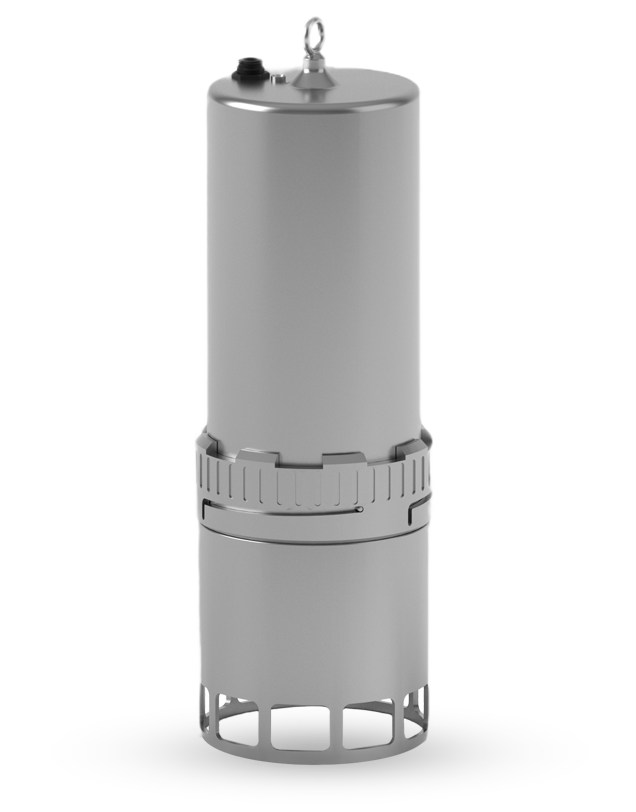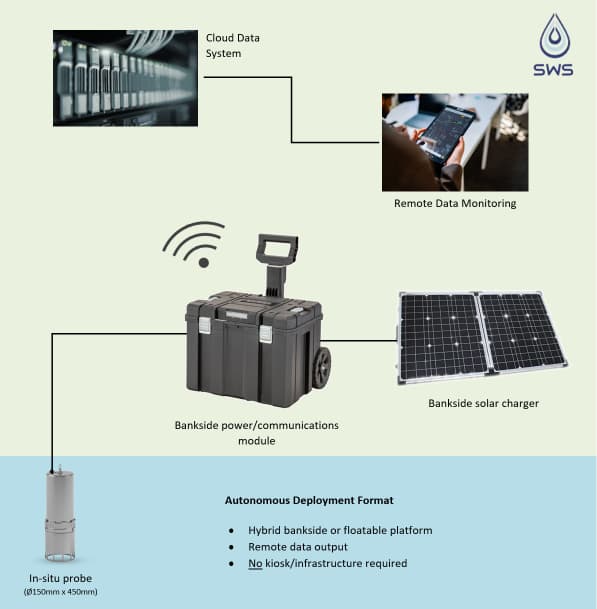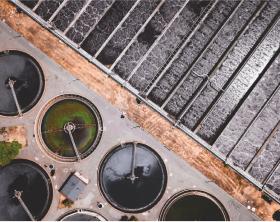Products
DropletSens™
Phosphate Probe
Real-time, high-frequency, lab-quality phosphate monitoring.


Features
- Based on established Molybdenum Blue test
- Dissolved (ortho-)phosphate determined autonomously
- Fully quantitative
- On-device standard for performance QC
Specifications
Analytical
- Range
- 0 - 8 mg/L PO4-P
- Detection Limit
- 0.01 mg/L PO4-P
- Measurement Frequency
-
up to every 10 seconds
default setting is every 15 min
Operational
- Temperature range
- 0 - 35 °C
- Maximum deployment depth
- 1 m
-
Power consumption** for continuous use measuring every 15 min
- 1.5 W
Physical
- Height
- 400 mm
- Width
- 150 mm
- Weight
- 8.2 kg
Communications
- Connectivity
- RS232/RS485, Modbus, Bluetooth, SCADA compatible
- Data output
- Remote streaming
Maintenance
- Reagent change after 3 months if in continuous use
- Required inlet filter change frequency depends on application; typically 3 months for environmental applications (turbidity ≤250 NTU)
Applications
Process Control, Rivers, Streams & Lakes, Coastal, Agriculture, Aquaculture, Industrial, Environmental Monitoring, Estuary Monitoring, Catchment Monitoring, Effluent Monitoring, Nutrient Mapping, Nutrient Recovery, Nutrient Trading, Nature-Based Solutions Effectiveness Monitoring.

Why phosphate?
Phosphate is monitored in the water network and watercourses to better understand and reduce the environmental impact caused by sewage treatment outflows, storm overflows and agricultural run-offs, which can result in excessive algal growth and fish deaths. This pollution data can be used to guide investment decisions, monitor effectiveness of remedial measures such as wetlands, and support nutrient-trading schemes to unlock housing developments.
Apart from the dissolved ‘reactive phosphorus’ or ‘ortho-phosphate’ which DropletSens™ measures colorimetrically, there is also suspended or bound phosphorus, with all phosphorus compounds together adding up to ‘Total Phosphorus’ or ‘Total-P’. At present there are no electrochemical or spectral approaches that can measure ortho-phosphate.
Phosphate discharge limits are in place in most countries to protect the receiving ecosystems. Increasing focus is also placed on Phosphorus recovery, as it is a limited resource and required for fertilizer production.


Monitoring Solutions
We offer the following solutions for monitoring phosphate:
A. SWS turn-key solution: fully autonomous SWS sensor probes with own battery, connectivity and user interface:

B. Third party static, floatable & moveable integrated solutions.
- B1. SWS sensor probes integrated into WATR's hybrid bankside installations
- B2. SWS sensor probes mounted onto WATR's Pro 2.0 floatable platform
- B3. SWS sensor probes mounted onto CCI's WADR moveable platform - coming soon - notify me


